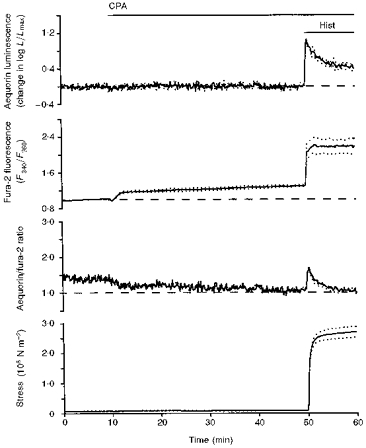Figure 5. Demonstration that inhibition of SERCA increased the fura-2 signal without altering the aequorin signal; this suggests that SERCA function was responsible for maintaining an inhomogeneous [Ca2+]i distribution in resting smooth muscle (i.e. maintaining [Ca2+]pm > [Ca2+]c).

Time courses are shown for aequorin-estimated [Ca2+]i, fura-2-estimated [Ca2+]i, the aequorin/fura-2 ratio and active stress. Data are from swine carotid medial tissues (n= 4–6). In the presence of 1.6 mM extracellular Ca2+, tissues were first exposed to 10 μM cyclopiazonic acid (CPA) at 10 min and then 100 μM histamine was added at 50 min. Data are plotted as in Fig. 1. The maintenance of maximal contractile stress at peak values despite decreasing aequorin-estimated [Ca2+] (cf. 51 vs. 60 min) is a manifestation of the latch phenomenon (Rembold & Murphy, 1988).
